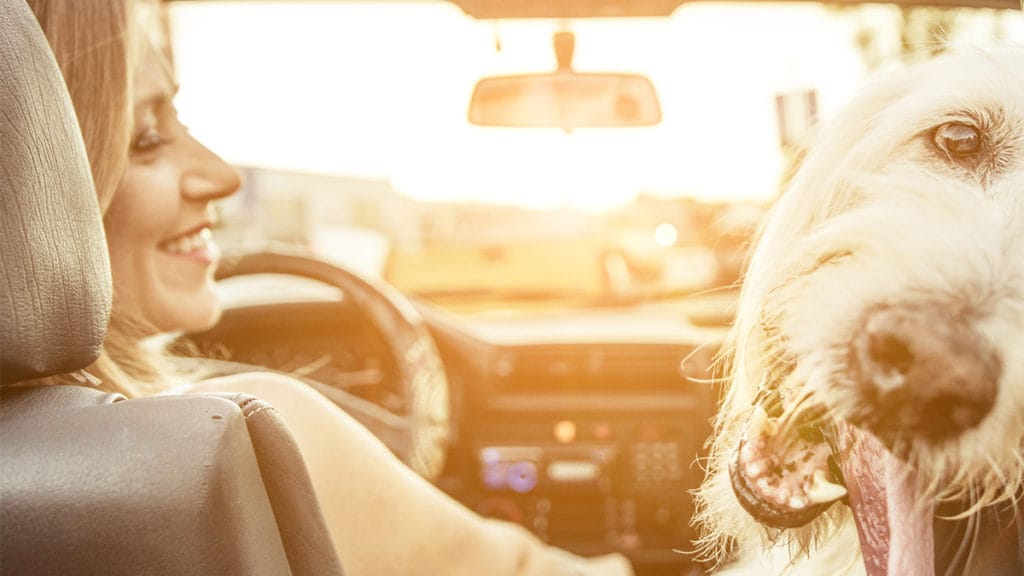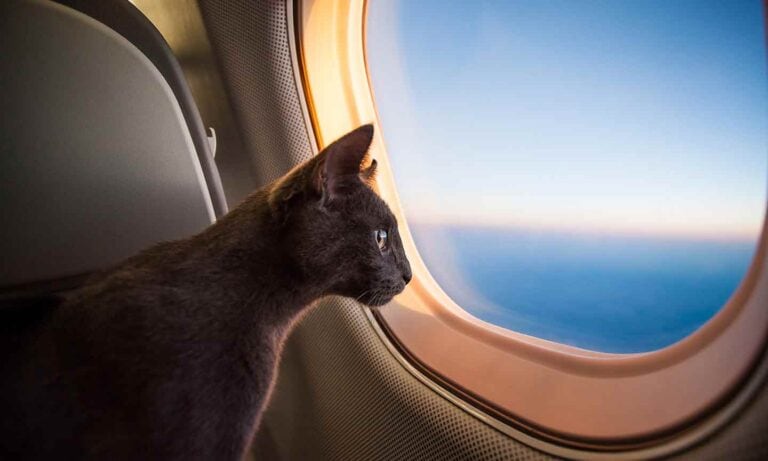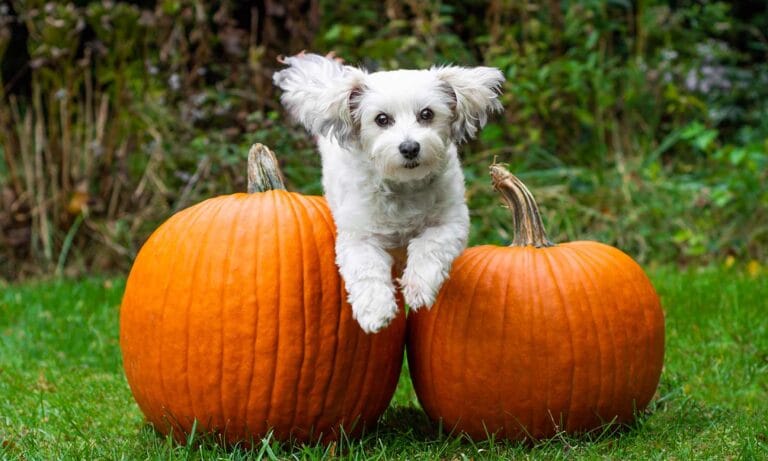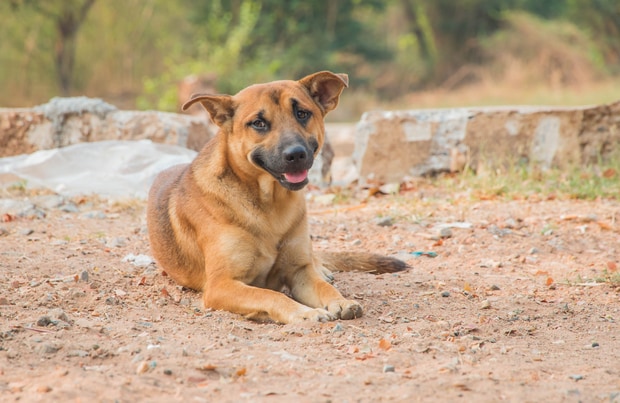Travel can be stressful for even the most organized humans. Add pets to the mix and that’s just one more element of worry, right? Not necessarily. All it takes is a little research and planning, and you can successfully—and calmly—travel with your furry friend.
• Choose the Right Crate or Pet Carrier: No matter how you plan to get from point A to point B, your pet should be secured in a protective crate or pet carrier that will keep him safe and prevent him from distracting you if you’re driving a vehicle. If flying with a dog or cat, check with your airline for specific regulations regarding the size and species of your pet to see if he can fly in the cabin with you. Be sure to choose a size that is approved by your airline.
When shopping for a pet crate, look for one that’s tall enough for your pup or cat to stand in comfortably, wide enough for him to turn around and stretch easily, and long enough for him to lie down with his paws extended. Line the bottom with a non-slip pad or mat. You can also add your pet’s favorite toy or bone for extra comfort. Some pet parents like to put something they’ve worn inside the crate, like an old T-shirt, so their pal can be comforted by a familiar smell. Just don’t leave anything that is a danger to your pet, such as a leash, which is a strangulation hazard.
Try These:
Petmate Jelly Vari Translucent Kennel for Dogs & Cats
Petmate Soft Sided Pet Kennel Cab & Carrier
Bergan Wheeled Comfort Pet Carrier
Precision Pet Products SnooZZy Sleeper Crate Mat
Simple Solution Washable Training & Travel Pad
• Acclimate Your Pet to His Temporary Home: In the week leading up to your trip, familiarize your pet with his new crate or carrier. Allow him to inspect it. When he’s comfortable, put him inside the pet carrier and secure it while it’s still in your home. This prep work should make the day of pet travel less stressful for you and your pet.
• Research the Airport and Airline: Before you head to the airport, call or visit its website to find out if there are special areas reserved for pets to play or potty while waiting for a flight. Take another look at your airline’s rules and regulations for traveling with pets to ensure you are following all of the guidelines. If you plan to bring your pet in the cabin, review the Transportation Security Administration’s screening procedures for pets.
• Minimize Stress at the Airport: A bustling airport can be overwhelming even for seasoned human travelers. Just imagine how your pet might react to all the noise and movement. To minimize stress for both of you, secure your pet in his travel carrier before entering the airport. You can throw a cover over the carrier to keep him calm. Keep him inside the carrier until you reach your destination, unless the whole trip lasts longer than six hours—then he’ll need a break to have some water and take a potty break.
If you’re taking your pet through security to ride with you in the cabin, make sure he’s wearing a harness or collar. That way, it’s easier to secure her leash when you need to remove her from the carrier to walk through the security checkpoint. Just remember to remove the leash before he goes back into the carrier.
• Plan Ahead with Pre-Travel Moves and Menus: Give your pup plenty of opportunity to exercise before crating him for an hours-long trip to help him relax. But don’t let your pal begin a trip on a full stomach, which could make him nauseous or prompt an inconveniently timed potty break. Make sure your dog fasts for about six hours pre-departure, and skip your cat’s morning feed.
• Keep Some Items on Hand: Although you’re holding back food until you reach your destination, you will need plenty of water when traveling with pets. Carry a collapsible pet bowl for water breaks. You might also want to stock up on disposable cat litter boxes or dog poop bags, for obvious reasons.
Try These:
Petmate Airline Travel Kit, Travel Kit Deluxe
Petmate Silicone Round Collapsible Travel Pet Bowl
Nature’s Miracle Disposable Cat Litter Box – 3 Pack
• Organize Labels and Other Important Documents: Your furry friend should have clear ID labels on his collar and travel crate or carrier. Include his name, your name, your contact information and details about your starting point and destination. When flying with a dog or cat, you may need to carry a Certificate of Veterinary Inspection and/or a vaccination log for your pet. Check your airline’s requirements.
If you’re traveling with pets by car, you should visit the American Veterinary Medical Foundation to see if the state you’re traveling to–or passing through–requires a Certificate of Veterinary Inspection.
• Don’t Leave Pets in Parked Cars: When you make a pit stop, you may be tempted to leave your pet in the car with the windows cracked. Don’t. Temperatures rise dangerously high inside closed cars very quickly, which can cause your pet to overheat–or worse. If you’re road tripping to major attractions, such as the Grand Canyon, note that few allow pets, or if they do, it’s only limited access. Check access rules ahead of time. You may find that even if they don’t allow pets, some monuments, parks and attractions do provide kennels so your pet can wait for you safely.
• Seek Out Pet-Friendly Hotels: Not all hotels or vacation homes welcome pets with open arms. Before you hit the road–or the skies–plan your rest stops and destinations around accommodations for your pet. There are plenty of pet-friendly hotels or at least dog-friendly hotels—typically with some requests and restrictions.
Share:













